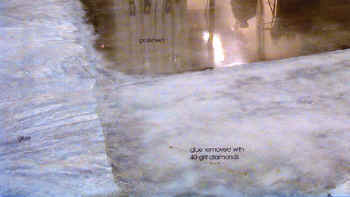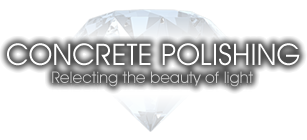Commercial Concrete Polishing
by Jeff Potvin, The Concrete NetworkAs an engineer, I visualize a commercial floor as a thick concrete slab with lots of reinforcement. I'm thinking of the loads that the slab will need to resist, not the abrasion that it will see on the surface: but concrete in commercial and industrial applications must support heavy loads and resist surface wear.
Some say the surface of concrete is weak and needs to be coated with a more durable finish. Others say that the strength of the concrete is below the surface. According to some, concrete polishing is becoming the universal choice for commercial flooring. I'm going to take a look at the benefits and drawbacks of this process.
Concrete polishing, or "slab restoration" (as Kerry Pauley, president of The Irony Pony, Ltd., refers to it as), is being used throughout the country. Here is why: commercial concrete is often protected from wear and dusting with topical sealers and coatings. These sealers and coatings can range in cost from 50 cents per s.f. for topical sealers, to $10 per s.f. for epoxy and urethane- based coatings. Concrete polishing prices will range from $3-7 per s.f. for a 3,000 grit finish based on size of the project and the number of obstacles. "A 3,000 grit finish includes the use of an impregnating sealer that reacts with the concrete and fills the surface voids," says Pauley.
Read more about polished concrete cost.
The installation costs for polished concrete is half to one third the cost of coatings, but that's not where the savings really lie. "Polishing concrete improves the overall quality of the floor," says Poinsettia Byrd with VIC International. The long-term maintenance costs can be astronomical for a commercial floor. Businesses such as manufactures, department stores, restaurants, and car dealers use polishing because coatings and sealers can have issues such as delaminating, staining and wear through. The life of some of these finishes can often be measured in months, resulting in constant up-keep. Polishing concrete produces an extremely dense, abrasion resistant surface that will not delaminate.
The polished surface may lose some of its shine over time in areas of heavy forklift and foot traffic. The shine can be brought back with minimal aggravation and cost. The only maintenance a polished floor will need is the removal of abrasives such as sand. Depending on the use of the floor, cleaning with a light detergent may also be needed. The service life of polished concrete cannot be determined as of yet since it is a fairly new process. But some existing polished concrete jobs that see heavy forklift traffic are over 5 years old and performing well with minimal maintenance.
Other benefits that commercial and industrial property owners see in polishing concrete are reflectance, slip resistance, low VOC's and as Bill Kulibert, president of American Polished Concrete, Inc. says," the biggest key is that the concrete can breathe."
As can be seen from the photo below, reflectance, or the shine of the polished concrete, produces a brilliant surface. "Polished floors are more slip resistant than a standard tile floor," says Byrd. "A floor polished to 3000 grit is less slippery than a sealed concrete floor," Byrd adds. Food processing plants require the use of sealers containing low levels of VOC's (Volatile Organic Compounds) and the surface must be USDA approved. Most topical sealers or coating contains higher VOC levels than impregnators. Polished concrete is USDA approved.
The number one cause of failure of coatings is hydrostatic pressure. Hydrostatic pressure will build up under the coating and pop it off. Polished concrete can breath, allowing moisture vapor to escape while not allowing salts or efflorescence to form.

Photo courtesy of The Iron Pony, LTD
Of course polished concrete is not a cure all. It shouldn't be used when exposed to high levels of acid. Polishers steer clear of floors that will see a lot of acid since the concrete will become etched, losing its abrasion resistance and becoming less stain resistant. Also, melting road salt from tractor-trailers penetrate and damage polished concrete surfaces, making these areas undesirable. When color will be an issue, polishing may not work. The color difference from one slab to the next may be extreme. That's why most polishers do a sample area to show how the slab will look.
Polished concrete is an up and coming process that gives commercial and industrial property owners more for their money. Polished concretes abrasion resistance and low maintenance costs allow for years of service. Of course it's not for every floor, but it sure covers, or shall I say uncovers, most of them.

Jeff Potvin, a Civil Engineer and the owner of Architectural Concrete Consultants, has nearly fifteen years of experience in the architecturalconcrete industry. His experience includes stamped concrete, overlays, form-liners, acid stains, counter tops and coatings.
He helps contractors get started in the industry with hands on training, promoting, product selection and troubleshooting. Property owners such as theme parks and retailstores consult with him on product sourcing and maintenance issues. Architects and Engineers utilize Jeff's knowledge on the preparation of specifications and oneducational presentations. He is a member of ASCE, ACI, ASCC, IAAPA and the DCC.

